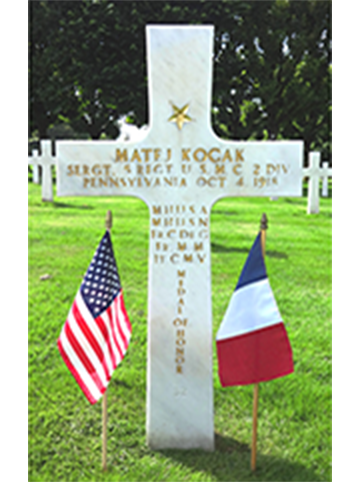The Immigrant Army: Immigrant Service Members in World War I

As the American military mobilized to enter World War I in 1917, its ranks filled with a diverse cross-section of American society, including immigrants from around the world. The nation entered the war during a period of peak immigration; between 1901 and 1920, almost 14.5 million immigrants arrived in the U.S. Some Americans welcomed the new immigrants, while others called for increased restrictions on immigration. These sentiments impacted the immigrants who took up arms for the U.S. during World War I.
Foreign-born soldiers composed over 18 percent of the U.S. Army during World War I. Almost one in five draftees was born overseas. Many immigrants also volunteered to serve in the military, often to prove their loyalty to the U.S. and demonstrate their patriotism for their new country. Some military units became known for their many immigrant members, such as the 77th Infantry Division which was nicknamed the “Melting Pot Division” because the majority of its members came from New York City.
According to the 77th Division’s 1919-published history of its wartime service, the division’s “recruits represented all races and all creeds—men who had only recently been subjected to the pogroms of Russia, gunmen and gangsters, a type peculiar to New York City, Italians, Chinamen, the Jews and the Irish, a heterogeneous mass, truly representative…of New York City.” The 77th Division’s insignia even featured the image of the Statue of Liberty. This choice symbolized how the same immigrants who sought freedom in the U.S. now served overseas to protect that freedom.
Upon entering the armed forces, many immigrant service members could not speak English and knew very little about the U.S. military and government. To address this, the War Department offered a variety of English-language classes to immigrants in wartime training camps. Drawing from the early twentieth-century Americanization Movement that promoted the integration of new immigrants into American culture and society, these classes often included lessons on civics and citizenship to help “Americanize” the men and prepare them both for the battlefield and for life as engaged American citizens after the war.
To further integrate noncitizen soldiers, Congress passed legislation allowing for the expedited naturalization of foreign-born members of the military. This opportunity allowed more than 300,000 immigrant soldiers to eventually become citizens of the nation they swore to defend.
Immigrants served in U.S. military during World War I in a variety of ways both at home and abroad. Many service members embraced their heritage while they devoted themselves to the defense of the U.S. For example, Russian Jewish immigrant Harry Frieman of the Army’s 79th Division recounted in his diary how he celebrated the Jewish holiday of Rosh Hashanah with the YMCA in France in September 1918. This religious observance took place just before he participated in the Meuse-Argonne Offensive that helped lead to the armistice that ended that war on Nov. 11, 1918.

Many immigrants viewed their World War I service as a transformational event in their lives and a key part of their identity as new Americans. While many immigrants returned to the U.S. and became citizens after the war, others lost their lives in service of their adopted nation, often before obtaining their American citizenship.
Thirteen immigrants received the Medal of Honor during World War I, including Marine Corps Sgt. Matej Kocak, an immigrant from Slovakia (then part of Austria-Hungry) who posthumously received the award from both the Army and the Navy for his heroic actions during the Battle of Soissons on July 18, 1918. Although he survived that battle, he later lost his life on Oct. 4, 1918, in the Battle of Mont Blanc Ridge during the Meuse-Argonne Offensive. He is buried at the Meuse-Argonne American Cemetery in France. Kocak’s grave stands as a testament to the courage and patriotism of immigrant service members during World War I.
